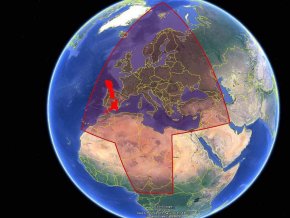recce.k1
Well-Known Member
Talking of the 'Russians' I recall reading a (Kiwi) 'old-salts' personal blog several years ago and he had a picture of a former Soviet era fishing trawler (IIRC raised on a slipway?) with a modified hull containing torpedo tubes. I haven't been able to locate it again since but did anyone also see it and if so can they re-link to it?
Asking to find out what was the context to the photo (eg where was it taken and did it have any relevance to us in the South Pacific ... but also to highlight a potential 'disruptor' threat to us in the so-called 'benign' South Pacific ... particularly as we have a new aspiring world power in our 'wider backyard' with the largest fishing fleets in the world, which (stealthily) could potentially disrupt commercial shipping well away from the frontlines in a future conflict (or at least tie up allied resources looking for them).
If we fast-forward to today, imagine the increased 'disruptor' possibilities those disguised fishing vessels could have for NZ in the wider Pacific in the form of small concealed 'bolt-on type' anti-shipping missiles (even 2-4 per vessel would still be lethal), jamming equipment and/or UAV's or small unmanned copter sized reconnaissance assets allowing them increased surveillance range etc.
(As an aside I would like consideration for future OPV replacements to have space and weight reserved for a suitable close in weapon system to protect against shorter-range surface threats that are likely to pop up in their operating environment eg CWIS or SeaRAM or Millenium gun etc, plus in addition perhaps one, or two, LM/MBDA ExLS 3-Cell Standalone Seaceptor launchers (which can also do anti-surface) ... granted, no point over-arming an OPV so it becomes a Corvette so let's not, however I think it would be short-sighted to NOT have some form of increased self-defence for the OPV's to deal with these 'new' threats (which are likely to be common around the wider Pacific) now that the potential 'threat level' will be somewhat higher by the time they are built. Upgrade the 25mm main gun to 57mm (or 76mm) and also provide additional anti-air defence against any small unmanned copter type aircraft etc. Add counter measures (anti-ship missile, anti-torpedo etc) and NZ could have some cost-effective patrol vessels that would be alot more survivable than the current ones that are not). Anyway perhaps this is more RNZN discussion in relation to future OPV's (and the S-OPV?)).
Asking to find out what was the context to the photo (eg where was it taken and did it have any relevance to us in the South Pacific ... but also to highlight a potential 'disruptor' threat to us in the so-called 'benign' South Pacific ... particularly as we have a new aspiring world power in our 'wider backyard' with the largest fishing fleets in the world, which (stealthily) could potentially disrupt commercial shipping well away from the frontlines in a future conflict (or at least tie up allied resources looking for them).
If we fast-forward to today, imagine the increased 'disruptor' possibilities those disguised fishing vessels could have for NZ in the wider Pacific in the form of small concealed 'bolt-on type' anti-shipping missiles (even 2-4 per vessel would still be lethal), jamming equipment and/or UAV's or small unmanned copter sized reconnaissance assets allowing them increased surveillance range etc.
(As an aside I would like consideration for future OPV replacements to have space and weight reserved for a suitable close in weapon system to protect against shorter-range surface threats that are likely to pop up in their operating environment eg CWIS or SeaRAM or Millenium gun etc, plus in addition perhaps one, or two, LM/MBDA ExLS 3-Cell Standalone Seaceptor launchers (which can also do anti-surface) ... granted, no point over-arming an OPV so it becomes a Corvette so let's not, however I think it would be short-sighted to NOT have some form of increased self-defence for the OPV's to deal with these 'new' threats (which are likely to be common around the wider Pacific) now that the potential 'threat level' will be somewhat higher by the time they are built. Upgrade the 25mm main gun to 57mm (or 76mm) and also provide additional anti-air defence against any small unmanned copter type aircraft etc. Add counter measures (anti-ship missile, anti-torpedo etc) and NZ could have some cost-effective patrol vessels that would be alot more survivable than the current ones that are not). Anyway perhaps this is more RNZN discussion in relation to future OPV's (and the S-OPV?)).

